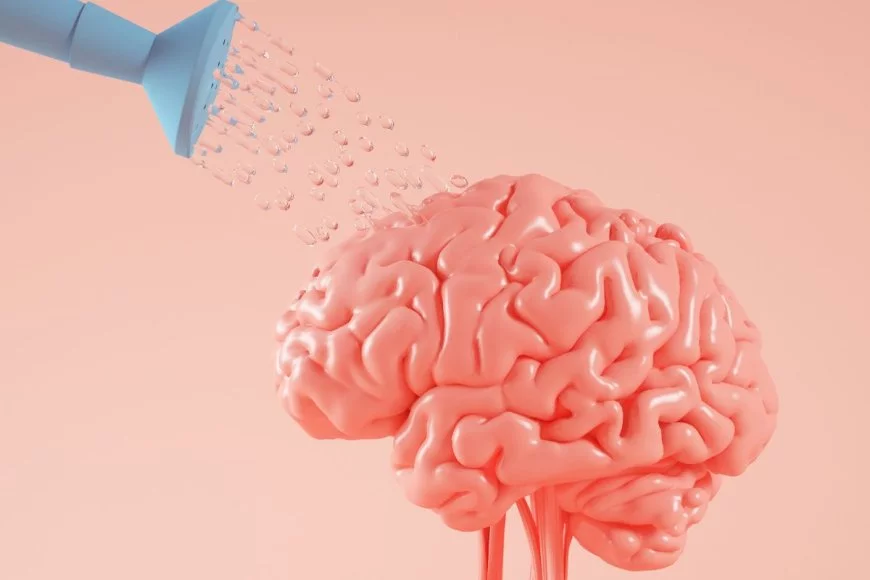What Tools Enable Psychologists to Study the Brain in Depth?
Discover the advanced tools and techniques psychologists use to delve into the depths of the human brain. Gain insights into cognitive processes and neuroimaging in psychology.

The fusion of technology and psychology has revolutionized our understanding of the human brain. Technological tools, such as functional magnetic resonance imaging (fMRI) and electroencephalography (EEG), have provided psychologists with unprecedented insights into the complexities of the brain's functions. These tools enable researchers to observe brain activity in real-time, unraveling intricate neural processes that were once inaccessible. The impact of these advancements on our comprehension of neurological disorders, cognitive functions, and behavioral patterns is profound.
Technological strides in neuroscience have propelled the field forward, allowing for a deeper exploration of the brain's enigmatic workings. From non-invasive imaging techniques to sophisticated data analysis software, these innovations have broadened the horizons of psychological research. By delving into this amalgamation of technology and psychology, we uncover a realm where intricate neural pathways are illuminated by cutting-edge instruments.
Exploring Brain Function Through Technology
Importance of Technological Tools
Technological tools play a pivotal role in enabling psychologists to delve into the intricate workings of the brain. These tools, such as functional magnetic resonance imaging (fMRI) and electroencephalography (EEG), provide unprecedented insights into brain functions, allowing researchers to observe neural activity in real time. The advantages of employing technology in brain research are substantial. For instance, fMRI enables the visualization of blood flow in the brain, aiding in identifying which areas are active during specific tasks or stimuli. EEG allows for the measurement of electrical activity in the brain, offering valuable data on cognitive processes and neurological disorders. The contribution of technological tools to psychological studies is profound, fostering a deeper understanding of mental health conditions and cognitive mechanisms.
Evolution of Brain Study Methods
The historical development of brain study techniques has witnessed a remarkable transition from traditional approaches to modern methodologies. Initially, early anatomists relied on dissections to comprehend the structure and function of the brain. Over time, advancements such as positron emission tomography (PET) and magnetoencephalography (MEG) revolutionized brain study methods by enabling non-invasive observation of brain activity. Notably, milestones like the invention of computed tomography (CT) scanning and the development of optogenetics have significantly expanded our ability to explore neural circuits and manipulate neuronal activity with light.
Current Trends in Neurotechnology
In contemporary neuroscience, several emerging trends in neurotechnology are shaping current research endeavors. One prominent trend involves the convergence of artificial intelligence (AI) with neuroimaging techniques to analyze complex brain data more efficiently. This amalgamation facilitates pattern recognition within large datasets obtained from imaging technologies like fMRI and MEG. Moreover, advancements such as opto-genetics allow scientists to control specific neurons using light-sensitive proteins, paving the way for targeted interventions in neurological disorders. Furthermore, neurofeedback systems leveraging virtual reality environments are gaining traction for therapeutic applications by providing real-time information about brain activity to individuals undergoing treatment.
The integration of advanced technological tools has propelled neuroscience into an era marked by unprecedented capabilities for studying the complexities of the human brain. From unraveling neural pathways associated with mental illnesses to elucidating fundamental cognitive processes, these innovations continue to redefine our understanding of how the brain functions.
Neuroimaging Advances in Psychology
Magnetic Resonance Imaging (MRI)
Magnetic Resonance Imaging (MRI) is a powerful tool that enables psychologists to study the brain's structures and functions. By utilizing magnetic fields and radio waves, MRI provides detailed images of the brain, allowing researchers to visualize abnormalities, tumors, or injuries. This non-invasive technique has significantly contributed to understanding neurological disorders such as Alzheimer's disease, multiple sclerosis, and epilepsy. Moreover, MRI plays a crucial role in identifying changes in brain anatomy associated with psychological conditions like depression and schizophrenia.
Functional MRI (fMRI) is pivotal in mapping brain activity by measuring blood flow changes related to neural activity. It has revolutionized cognitive neuroscience by enabling researchers to investigate how different areas of the brain respond during various tasks or stimuli. For instance, fMRI studies have revealed insights into decision-making processes, language comprehension, and emotional responses. Advancements in fMRI technology have enhanced its effectiveness in capturing real-time brain activity with improved spatial resolution and sensitivity.
Positron Emission Tomography (PET)
Positron Emission Tomography (PET) is instrumental in visualizing brain functions by detecting radioactive tracers injected into the bloodstream. PET scans are used to study neurotransmitter activity, providing valuable information about dopamine, serotonin, and other chemical messengers' roles in cognition and behavior. While PET offers unique insights into brain metabolism and function, it also has limitations such as lower spatial resolution compared to MRI or fMRI. However, PET remains indispensable for investigating conditions like Parkinson's disease and addiction disorders.
Electroencephalography (EEG) and Brain Activity
Understanding EEG Signals
Electroencephalography (EEG) is a non-invasive technique that measures electrical activity in the brain. It provides valuable insights into brain function by recording the spontaneous electrical activity of neurons, offering a window into cognitive processes. EEG signals are characterized by rhythmic patterns, such as alpha, beta, delta, and theta waves, each associated with different mental states and activities. For instance, alpha waves are linked to relaxation and meditation, while beta waves indicate active thinking or concentration. This understanding allows psychologists to assess brain states during various tasks or conditions.
The interpretation and analysis of EEG data involve identifying patterns and anomalies within the recorded electrical signals. Psychologists can analyze event-related potentials (ERPs), which are changes in the EEG signal associated with specific stimuli or tasks. This enables the investigation of cognitive functions like attention, memory, perception, and language processing. Advanced analytical techniques like time-frequency analysis provide detailed information about the temporal dynamics of brain activity during different cognitive processes.
Applications of EEG signals in cognitive research encompass diverse areas such as studying attention mechanisms, memory processes, language comprehension, emotional responses, and sleep patterns. Researchers use EEG to explore how the brain responds to stimuli or tasks in real-time scenarios. For example, studies have utilized EEG to investigate neural correlates of decision-making processes and emotional regulation strategies. Moreover, EEG has been instrumental in understanding neurological disorders like epilepsy and Alzheimer's disease through characteristic patterns evident in the recorded brain activity.
Applications in Cognitive Neuroscience
Technological tools play a pivotal role in advancing cognitive neuroscience studies by enabling precise measurement and observation of brain activity. In cognitive neuroscience research involving human participants, EEG facilitates real-time monitoring of neuronal responses to external stimuli or internal mental processes. This technology has been employed to examine neural mechanisms underlying perception, learning, decision-making, consciousness, motor control, and other fundamental aspects of cognition.
An exemplary application illustrating the use of technology in cognitive neuroscience involves utilizing EEG for investigating neuroplasticity – the brain's ability to reorganize itself based on experiences. Studies have used EEG to assess changes in cortical excitability following motor skill training or sensory stimulation interventions. Furthermore, technological advancements have led to portable wireless EEG systems that allow researchers to conduct experiments outside laboratory settings without compromising data quality.
Advancements in EEG Technology
Recent developments have significantly improved EEG signal quality by reducing environmental noise interference and enhancing spatial resolution for more precise localization of neural activity sources within the brain. Innovations such as high-density electrode arrays enable capturing fine-grained details of cortical activation patterns during complex cognitive tasks with unprecedented accuracy.
Intracranial Electroencephalography (iEEG) Insights
iEEG vs. Non-invasive Methods
In studying the brain, psychologists utilize both invasive and non-invasive methods. Non-invasive techniques, such as traditional EEGs, offer the advantage of being less risky and more accessible. On the other hand, intracranial EEG (iEEG), although invasive, provides a more detailed and accurate view of brain activity by directly measuring electrical signals from within the brain.
IEEG plays a crucial role. In epilepsy diagnosis, iEEG helps identify seizure foci with pinpoint accuracy, aiding in precise surgical intervention for patients with drug-resistant epilepsy. In brain mapping procedures for surgical planning or research purposes, iEEG enables the precise localization of critical functional areas in the brain.
Ethical considerations surrounding iEEG procedures are paramount. While technological advancements provide invaluable insights into brain function and pathology, ethical concerns arise regarding patient safety and autonomy during these invasive procedures. Psychologists must carefully balance scientific progress with ethical responsibilities to ensure that patients' welfare remains a top priority when utilizing iEEG technologies.
Magnetoencephalography (MEG) Explained
MEG in Cognitive Studies
Magnetoencephalography (MEG) plays a pivotal role in cognitive research, offering insights into brain dynamics that underpin various cognitive processes. By capturing the magnetic fields generated by neuronal activity, MEG enables psychologists to delve into the intricate workings of the brain during tasks such as language processing, memory encoding, and attention allocation. This non-invasive technique allows researchers to observe real-time brain activity with millisecond precision, providing a deeper understanding of how different regions of the brain interact and contribute to cognitive functions.
MEG technology offers several advantages in cognitive studies. Unlike functional magnetic resonance imaging (fMRI), MEG directly measures neural electrical activity, making it highly sensitive to fast neural processes. This sensitivity is particularly valuable when studying rapid cognitive phenomena like perception and decision-making. MEG's ability to pinpoint the timing and location of neural events distinguishes it from electroencephalography (EEG), enhancing its utility in mapping out complex brain networks involved in higher-order cognition.
Comparing MEG with Other Neuroimaging Tools
In contrast to other neuroimaging tools such as MRI, fMRI, and PET scans, MEG provides unique insights into brain function by directly detecting neuronal electrical activity. While fMRI excels at revealing brain structures and blood flow changes associated with neural activity, it lacks the temporal resolution offered by MEG. Similarly, while MRI can offer detailed anatomical information about the brain's structure, it does not capture the dynamic nature of neuronal communication observed through MEG recordings.
MEG complements other neuroimaging techniques by offering a window into the rapid temporal dynamics of neural processing that may be missed by methods like fMRI or EEG alone. The combination of these technologies allows for a more comprehensive understanding of both spatial and temporal aspects of brain function, contributing to a more holistic view of cognitive processes and neurological disorders.
Future of MEG Technology
The future holds promising advancements for MEG technology that are poised to revolutionize cognitive studies and clinical applications. Anticipated developments include improved sensor arrays for enhanced spatial resolution, leading to more precise localization of neural activity within the brain. Furthermore, ongoing efforts aim to integrate MEG with structural MRI data for better anatomical localization alongside functional information obtained from MEG recordings.
As technological innovations continue to unfold, researchers anticipate broader applications for MEG in diverse research areas such as autism spectrum disorders and epilepsy diagnosis. With these advancements on the horizon, MEG is expected to play an increasingly significant role in unraveling the complexities of human cognition and neurological conditions.
Transcranial Magnetic Stimulation (TMS)
Principles of TMS
Fundamental principles underlie Transcranial Magnetic Stimulation (TMS), a non-invasive technique that uses magnetic fields to stimulate nerve cells in the brain. By generating brief magnetic pulses, TMS induces electrical currents in specific regions of the brain, modulating neural activity and providing insights into brain functions. The efficacy of TMS is influenced by key factors such as the intensity and frequency of stimulation, as well as the precise targeting of brain areas.
TMS in Psychological Research
TMS holds significant applications in psychological studies, enhancing understanding through targeted stimulation. For instance, researchers utilize TMS to investigate cognitive processes like attention, memory, and language. By temporarily disrupting or enhancing neural activity in specific brain regions, TMS enables scientists to discern the roles of these areas in various mental functions. This method contributes to unraveling complex neurological mechanisms underlying psychological phenomena.
TMS in Treatment Protocols
In therapeutic contexts, TMS interventions offer potential benefits for various neurological conditions. Incorporating TMS into treatment plans for depression, anxiety disorders, and chronic pain has shown promising results. Moreover, this non-invasive approach presents opportunities for expanding treatment protocols by addressing challenges related to accessibility and individualized patient responses.
By harnessing electromagnetic principles, Transcranial Magnetic Stimulation (TMS) provides valuable insights into the intricate workings of the human brain. Through targeted stimulation with TMS, researchers gain deeper understanding and shed light on cognitive processes such as attention and memory. Furthermore, integrating TMS into treatment plans for neurological conditions like depression demonstrates its potential for improving patient outcomes.
Brain-Computer Interfaces (BCIs)
Enhancing Neuroplasticity with BCIs
Harnessing Brain Computer Interfaces (BCIs) to promote neuroplasticity involves utilizing advanced technology to facilitate adaptive changes in the brain. BCIs can be employed in interventions aimed at promoting neuroplasticity, which is the brain's ability to reorganize itself by forming new neural connections throughout life. For instance, studies have shown that BCI-based interventions have implications for rehabilitation and recovery after neurological injuries or conditions, such as stroke or traumatic brain injury. These interventions can aid in restoring lost functions and enhancing quality of life for individuals affected by such conditions.
BCIs in Cognitive Rehabilitation
Integrating BCIs into cognitive rehabilitation programs has shown promising results in enhancing cognitive functions. By leveraging BCI technology, personalized approaches for cognitive rehabilitation can be developed based on an individual's specific cognitive challenges and goals. This personalized approach allows for targeted training and intervention strategies, leading to more effective outcomes in improving cognitive abilities. For example, research has demonstrated that using BCIs for cognitive rehabilitation can significantly enhance attention, memory, and executive functions in individuals with neurological disorders or cognitive impairments.
Ethical Issues in BCI Use
Ethical considerations surrounding the use of Brain Computer Interfaces are crucial when exploring their potential applications. While BCIs offer tremendous opportunities for advancing healthcare and improving quality of life for individuals with neurological conditions, it is essential to balance these potential benefits with ethical implications. Safeguarding privacy and autonomy when employing BCIs is paramount to ensure that individuals retain control over their personal data and decision-making processes. Addressing issues related to consent, data security, and equitable access to BCI technologies is vital for upholding ethical standards in their utilization.
In exploring the realm of brain-computer interfaces (BCIs), it's evident that these technological tools hold significant promise in revolutionizing the field of neuroscience and clinical applications. By harnessing BCIs to promote neuroplasticity, researchers and clinicians can pave the way for innovative interventions that drive adaptive changes within the brain, ultimately contributing to enhanced recovery outcomes for individuals facing neurological challenges.
Moreover, integrating BCIs into cognitive rehabilitation programs offers a tailored approach towards improving cognitive functions by leveraging the power of advanced technology. This personalized method not only enhances the effectiveness of rehabilitation but also opens new possibilities for addressing diverse cognitive impairments with targeted precision.
However, while embracing the potential benefits of BCIs, it's imperative to address ethical concerns associated with their use. Balancing advancements with ethical considerations ensures that these technologies are deployed responsibly while prioritizing individual autonomy and privacy rights.
Genetics and Brain Research Synergy
Genomics in Understanding Brain Disorders
Genomics plays a pivotal role in comprehending the genetic factors contributing to brain disorders. By leveraging genomics, researchers can unravel the complex genetic underpinnings of various neurological conditions. For instance, genomic studies have identified specific gene variations associated with disorders like schizophrenia and bipolar disorder, shedding light on their underlying mechanisms.
Furthermore, these insights hold significant implications for personalized approaches to treating brain disorders. Tailoring treatments based on an individual's genetic profile allows for more precise and effective interventions. For example, in the case of Alzheimer's disease, understanding the genetic predisposition of an individual can aid in developing targeted therapies that address their specific risk factors and symptoms.
Personalized Medicine Approaches
Personalized medicine strategies are revolutionizing the treatment of neurological conditions by tailoring interventions based on individual genetic profiles. This approach enables healthcare providers to customize treatments according to a patient's unique genetic makeup, leading to more effective outcomes. However, it also presents challenges such as ensuring accessibility to advanced genetic testing and addressing ethical considerations related to privacy and consent.
In addition to its benefits in treatment customization, personalized medicine holds promise for preventive measures as well. For instance, individuals at high risk for certain brain disorders can proactively adopt lifestyle modifications or undergo early screenings based on their genetic predispositions, potentially averting or delaying the onset of these conditions.
Genome-Wide Association Studies (GWAS)
Genome-wide association studies (GWAS) have emerged as a powerful tool for identifying genetic variations associated with brain disorders. These large-scale genomic investigations provide valuable insights into the intricate interplay between genetics and neurological health. Notably, GWAS have revealed significant associations between specific gene variants and conditions such as Parkinson's disease and multiple sclerosis.
The potential implications of GWAS findings extend beyond mere identification; they pave the way for developing targeted interventions tailored to address the underlying genetic components of brain disorders. For example, by pinpointing key genetic markers linked to a particular condition through GWAS, researchers can focus on developing therapies that specifically target these biological pathways or molecular mechanisms.
The Role of Artificial Intelligence in Brain Research
AI in Neuroimaging Analysis
Artificial intelligence (AI) has revolutionized neuroimaging analysis by integrating advanced algorithms to process and interpret complex brain imaging data. Through machine learning techniques, AI enhances the efficiency and accuracy of analyzing neuroimaging data, leading to groundbreaking advancements in reshaping neuroimaging research. For instance, AI algorithms have enabled researchers to identify subtle patterns or anomalies within brain images that may not be easily discernible through traditional methods.
Machine Learning Predictive Models
In the realm of brain research, the development and application of machine learning predictive models have been instrumental in forecasting neurological outcomes. By harnessing predictive analytics, these models can forecast disease progression with remarkable precision, offering valuable insights for personalized treatment approaches. Notably, a study published in Nature Medicine demonstrated that machine learning algorithms predicted the onset of Alzheimer's disease more than six years before clinical diagnosis with 100% sensitivity.
AI in Behavioral Neuroscience
Artificial intelligence is also playing a pivotal role in behavioral neuroscience studies by enabling the analysis of intricate behavioral patterns using sophisticated AI algorithms. This integration holds immense potential for understanding complex behaviors at a deeper level than previously achievable through conventional methods. For example, AI-driven analyses can uncover nuanced correlations between specific neural activities and behavioral responses, shedding light on the underlying mechanisms governing human behavior.
The utilization of artificial intelligence in neuroimaging analysis has significantly expedited the processing and interpretation of vast amounts of brain imaging data. By employing deep learning algorithms, researchers can swiftly analyze intricate details within neuroimages while minimizing errors associated with manual interpretation.
Machine learning predictive models have demonstrated exceptional capabilities in foreseeing neurological outcomes such as disease progression or response to interventions. These models leverage extensive datasets to identify subtle patterns indicative of future neurological developments, empowering healthcare professionals with invaluable prognostic information for delivering personalized care.
In behavioral neuroscience studies, artificial intelligence facilitates the identification and analysis of complex behavioral patterns that might otherwise elude traditional observational methods. By leveraging AI algorithms capable of processing large-scale behavioral data, researchers gain unprecedented insights into the underlying neural substrates influencing diverse behaviors.
The synergy between genetics and brain research has been further amplified by integrating artificial intelligence into genetic analyses related to neurological conditions. Through AI-powered genetic screenings and analyses, scientists can efficiently identify genetic markers associated with various neurological disorders, paving the way for targeted interventions tailored to an individual's genetic predispositions.
Conclusion
So, there you have it - a peek into the fascinating world of technology-driven brain research. From the intricate maps created by neuroimaging to the mind-bending potential of brain-computer interfaces, technology is propelling psychologists into unprecedented depths of understanding. As we continue to unravel the brain's mysteries, the synergy between genetics, artificial intelligence, and advanced imaging techniques promises even more astonishing insights. The future of psychology lies in harnessing these tools to decode the most complex organ in the known universe - your brain.
Ready to dive deeper into the mind-bending realm of brain technology? Whether you're a budding psychologist or simply intrigued by the inner workings of the human mind, staying updated on these cutting-edge advancements will keep you at the forefront of this exhilarating frontier.
Frequently Asked Questions
What are some tools of technology that enable psychologists to study the brain in depth?
Psychologists use various advanced technologies like neuroimaging, EEG, MEG, TMS, BCIs, and AI to delve into the complexities of the brain's functions and activities.
How does electroencephalography (EEG) contribute to studying brain activity?
EEG measures electrical activity in the brain using electrodes placed on the scalp. This non-invasive technique helps psychologists observe brain waves and patterns associated with different cognitive processes.
What is the significance of intracranial electroencephalography (iEEG) in gaining insights into brain function?
iEEG involves placing electrodes directly onto the surface of or inside the cerebral cortex. This method provides detailed information about localized brain activity related to specific behaviors or cognitive functions.
How does transcranial magnetic stimulation (TMS) aid in studying the brain?
TMS uses magnetic fields to stimulate nerve cells in specific regions of the brain. This allows researchers to investigate causal relationships between neural activity and behavior.
How do Brain-Computer Interfaces (BCIs) contribute to understanding brain function?
BCIs establish a direct communication pathway between an individual's brain and an external device. Psychologists utilize BCIs to explore neural signals and their relationship with cognitive processes.
What's Your Reaction?







































![MacBook Pro M5: All the features and specs you need to know [LEAKS REVEALED]](https://tomsreviewbox.com/uploads/images/202502/image_430x256_67bd6d7cd7562.jpg)



























